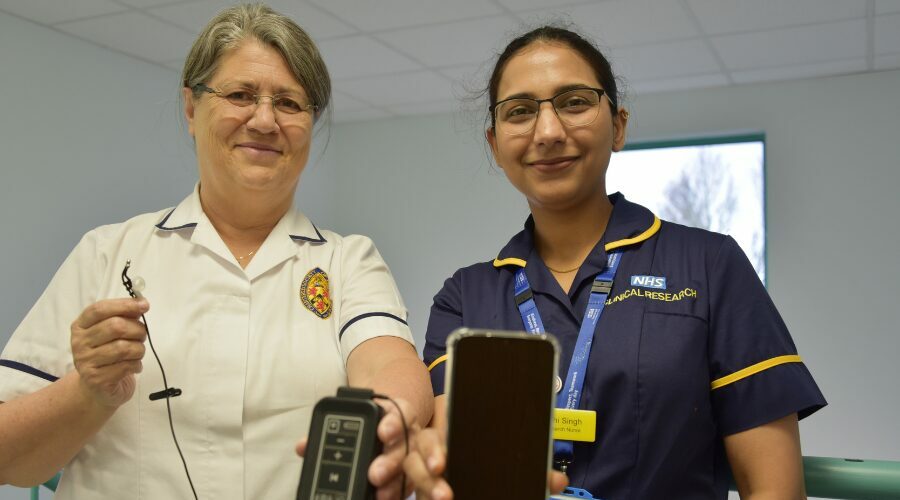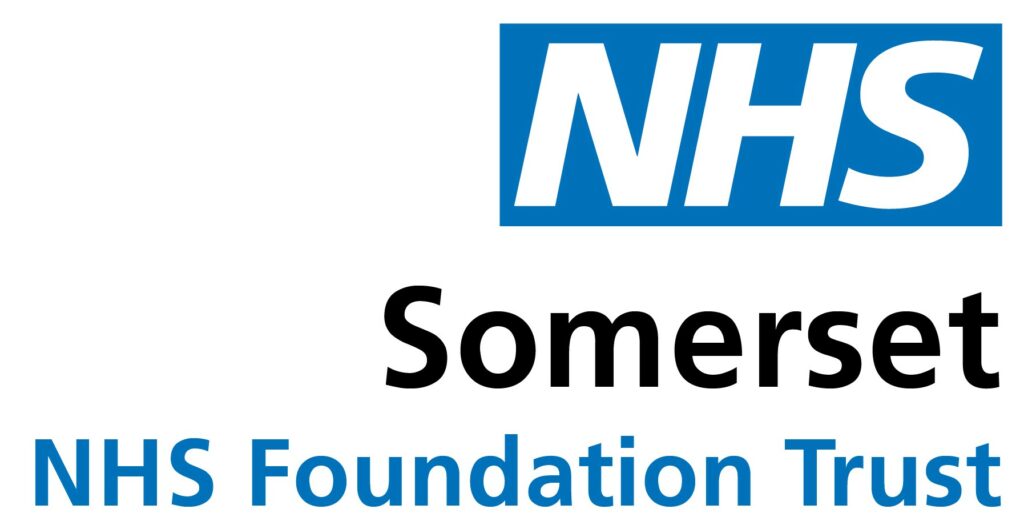
Spotlight
Somerset stroke care colleagues test pioneering nerve stimulation therapy
Our stroke care and research colleagues have teamed up to test a pioneering new nerve stimulation therapy, in bid to improve hand and arm weakness in stroke survivors.
The new stroke treatment delivers electrical pulses to a patient’s brain via a portable, pacemaker-like device, at the same time rehabilitation therapy is being carried out.
The trial, which is called TRanscutaneous lImb reCovEry Post-Stroke (or simply TRICEPS for short), is led nationally by researchers from Sheffield Teaching Hospitals NHS Foundation Trust and University of Sheffield, and is funded by a partnership between the National Institute for Health and Care Research and Medical Research Council.
In Somerset, stroke clinicians are actively recruiting patients to take part in the study, which is expected to be the first of its kind to check whether a treatment known as transcutaneous (through the skin) vagus nerve stimulation (TVNS) can improve hand and arm weakness in stroke survivors, when given as a self-delivered treatment during stroke rehabilitation therapy.
Researchers hope that the portable stimulation device will allow the revolutionary treatment to be provided to larger numbers of stroke patients, at cost and at scale.
Janet Schmitt, our AHP consultant stroke practitioner, and the trust’s principal investigator for TRICEPS, says: “Around 110,000 people suffer with a stroke in the UK every year and one third of stroke survivors are left with permanent arm weakness, which can make daily activities difficult.
“Rehabilitation therapy is the main treatment for people recovering from a stroke, but the benefits are modest, and many stroke survivors have persisting arm weakness, limiting their ability to self-care, which in turn creates pressure on the NHS and social care.
“The TRICEPS trial will build on the results of a recent clinical trial, which showed that, when combined with therapy, stimulating damaged areas of the brain using TVNS improved arm recovery in stroke survivors to a greater degree than if only therapy alone was provided.
“The stimulation is triggered via a lightweight, wearable pacemaker-like device, which connects to a wired earpiece. It’s automatically activated as the patient’s arm is moved during therapy, while the connected earpiece gently tickles the ear, meaning participants can access the treatment at home and without the need for a surgical implant.”
Patients in the study are given the device to wear for an hour, five times a week, as they carry out their stroke rehabilitation exercises at home with the support of our community physiotherapists.
And some patients are also asked to wear the device while performing their usual daily activities for a period of 12 weeks.
Nishi Singh, one of our research nurses, explains how patients can be recruited into the study. “At our spasticity or six month post-stroke clinics, our stroke and physiotherapy clinicians will identify any patients with upper limb weakness, who are still having rehabilitation after stroke,” she says.
“We then provide them with information and if they’re interested in taking part, we’ll ring them up and screen them against the study criteria, before consenting them into the trial.
“As part of the trial, each patient is issued with a medical device, called the TVNS simulation – an earpiece that hooks into their ear and stimulates the vagus nerve within the brain, via skin conductance.
“The patient then stays in the trial for six months, and we see them three times during this time, and they have the device for 12 weeks altogether.
“The overall study needs to recruit 243 patients in total across the country, and our target in Somerset is 10 patients, and so far we’ve enrolled four.
“During the 12 weeks that a patient has the device, our physiotherapy team contacts them five times to see how they’re getting on, and we also bring them back in for a follow-up appointment after three months, where they have more assessments with our physiotherapist.”
Professor Arshad Majid, consultant neurologist at Sheffield Teaching Hospitals NHS Foundation Trust and Professor of Cerebrovascular Neurology at the University of Sheffield and chief investigator of the trial said: “We are really excited to be launching this new study. In a very small preliminary trial, we showed that gently ‘tickling’ a nerve at the ear using mild electrical pulses improved arm and hand weakness after stroke when used in conjunction with stroke rehabilitation therapy.
“In our new trial we hope to establish if these findings can be replicated in larger numbers of patients, without the need for surgery, so that stroke survivors can access transcutaneous vagus nerve stimulation as part of their at-home rehabilitative therapy and care.
“By conducting this trial, we also hope to provide definitive answers as to whether this is an effective approach in improving recovery after stroke that can be rolled out at scale to large numbers of patients on the NHS.”
To find out more about the trial contact triceps@sheffield.ac.uk.
